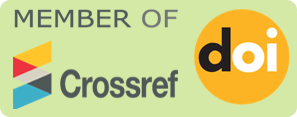COMMUNICATION PATTERNS BETWEEN TEACHERS AND STUDENTS IN THE TEACHING AND LEARNING PROCESS (SMK ISLAMIC CENTER BAITURRAHMAN)
DOI:
https://doi.org/10.62567/micjo.v2i3.934Keywords:
educational communication, teacher-student relationship, teaching and learning process, effective learningAbstract
This study aims to examine and analyze communication patterns between teachers and students in the teaching and learning process at SMK Islamic Center Baiturrahman. Communication between teachers and students plays a crucial role in creating an effective and conducive learning atmosphere. This study uses a descriptive qualitative approach with observation, interview, and documentation methods as data collection techniques. The results of the study indicate that communication patterns in this school run in an open, participatory, and religious atmosphere. Teachers not only act as conveyors of information, but also as guides and motivators who establish positive interpersonal relationships with students. Factors such as teaching style, student motivation, and school environmental support influence the smoothness of communication. Effective communication has been shown to improve students' understanding of the subject matter and strengthen their character and discipline. This study concludes that good communication patterns between teachers and students contribute directly to the achievement of learning outcomes and the formation of students' character holistically.
Downloads
References
Arikunto, S. (2010). Research Procedures: A Practical Approach . Jakarta: Rineka Cipta.
Barnlund, D. C. (2008). A Transactional Model of Communication . In Communication Theory .
Daryanto. (2014). Educational Communication . Yogyakarta: Gava Media.
Djamarah, SB (2011). Psychology of Learning . Jakarta: Rineka Cipta.
Effendy, OU (2003). Science, Theory, and Philosophy of Communication . Bandung: Remaja Rosdakarya.
Freire, P. (2005). Education of the Oppressed . Jakarta: LP3ES.
Gunawan, H. (2012). Character Education: Concept and Implementation . Bandung: Alfabeta.
Hargie, O. (2011). Skilled Interpersonal Communication: Research, Theory and Practice (5th ed.). London: Routledge.
Hurlock, E.B. (2002). Developmental Psychology . Jakarta: Erlangga.
Jalaluddin, R. (2007). Communication Psychology . Bandung: Rosdakarya Youth.
Koesnandar, C. (2010). Communication Strategy in Learning . Jakarta: Rajawali Pers.
Latif, M. (2020). Teacher and Student Communication Patterns in Improving Learning Outcomes. Nusantara Education Journal , 4(2), 135–148.
Maimunah, S., & Hartono, H. (2022). Teacher Communication Patterns in Improving Student Learning Motivation. Journal of Islamic Education and Learning , 5(1), 89–98.
Mehrabian, A. (1971). Silent Messages . Belmont: Wadsworth.
Miles, MB, & Huberman, AM (1992). Qualitative Data Analysis . Jakarta: UI Press.
Moleong, LJ (2018). Qualitative Research Methodology (Revised Edition). Bandung: Remaja Rosdakarya.
Mulyasa, E. (2013). Becoming a Professional Teacher: Creating Creative and Enjoyable Learning . Bandung: Remaja Rosdakarya.
Munari, A. (2019). Communication Theory: Perspective, Process and Context . Yogyakarta: Graha Ilmu.
Musfiqon, M., & Nurdyansyah, N. (2015). Scientific Learning Approach . Sidoarjo: Nizamia Learning Center.
Ningsih, L. (2021). Teacher and Student Interaction in Online Learning: A Psychopedagogical Review. Tarbawi Journal , 6(1), 55–68.
Rahmawati, T. (2020). Effective Teacher Communication in Character-Based Learning. Scientific Journal of Education , 10(2), 142–154.
Rogers, C.R. (1961). On Becoming a Person: A Therapist's View of Psychotherapy . Boston: Houghton Mifflin.
Sadirman, AM (2011). Interaction and Motivation of Teaching and Learning . Jakarta: Rajawali Pers.
Sugiyono. (2016). Qualitative, Quantitative and R&D Research Methods . Bandung: Alfabeta.
Tilaar, HAR (2002). Education, Culture and Civil Society of Indonesia . Bandung: Remaja Rosdakarya.
Downloads
Published
How to Cite
Issue
Section
License
Copyright (c) 2025 M. Rikza Chamami, Natasya Ayu Amalia

This work is licensed under a Creative Commons Attribution-ShareAlike 4.0 International License.

























